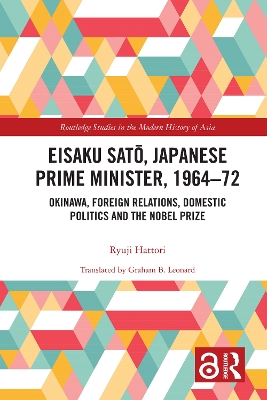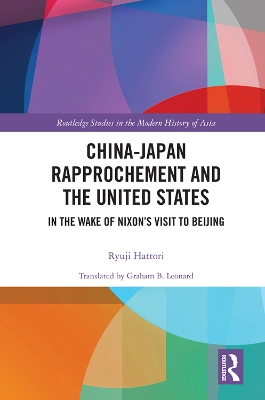Routledge Studies in the Modern History of Asia
2 total works
This book is a biography of Eisaku Satō (1901-75), who served as prime minister of Japan from 1964 to 1972, before Prime Minister Abe the longest uninterrupted premiership in Japanese history. The book focuses on Satō’s management of Japan’s relations with the United States and Japan’s neighbours in East Asia, where Satō worked to normalize relations with South Korea and China. It also covers domestic Japanese politics, particularly factional politics within the ruling Liberal Democratic Party (LDP), where Satō, as the founder of what would become the largest LDP faction, was at the centre of LDP politics for decades. The book highlights Satō’s greatest achievement – the return of Okinawa from United States occupation - for which, together with the establishment of the non-nuclear principles, he was awarded the Nobel Peace Prize, the only Japanese to receive the Prize.
The Open Access version of this book, available at http://www.taylorfrancis.com, has been made available under a Creative Commons [Attribution-Non Commercial-No Derivatives (CC-BY-NC-ND)] 4.0 license.
Based on extensive original research including interviews with key participants, this book examines how, following Richard Nixon's famous visit to China in 1972, Japan established formal diplomatic relations with China, doing so before the United States and other Western countries. It considers the key personalities - Prime Minister Tanaka and Foreign Minister Ohira on the Japanese side, and Zhou Enlai on the Chinese side, outlines how the discussions unfolded, and discusses the key issues which divided the two sides and how these issues were resolved: Japanese war reparations to China, how the two countries perceived their past, how Taiwan should be treated, and possession of the Senkaku Islands. The book also shows how Tanaka and Ohira sought to reconcile China-Japan relations with the US-Japan Security Treaty and to continue non-governmental exchanges with Taiwan following the severing of relations. Overall, the book emphasises that the nature of the relationship established in 1972 continues to be very important for understanding present day China-Japan relations.

